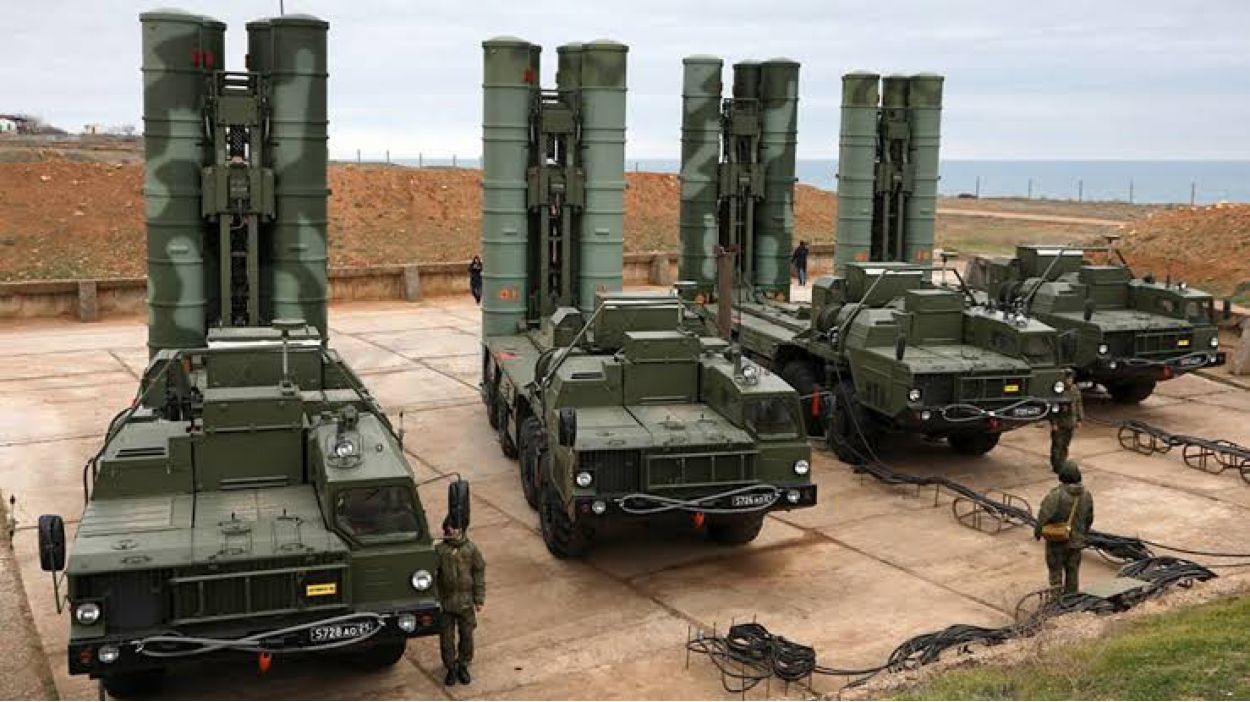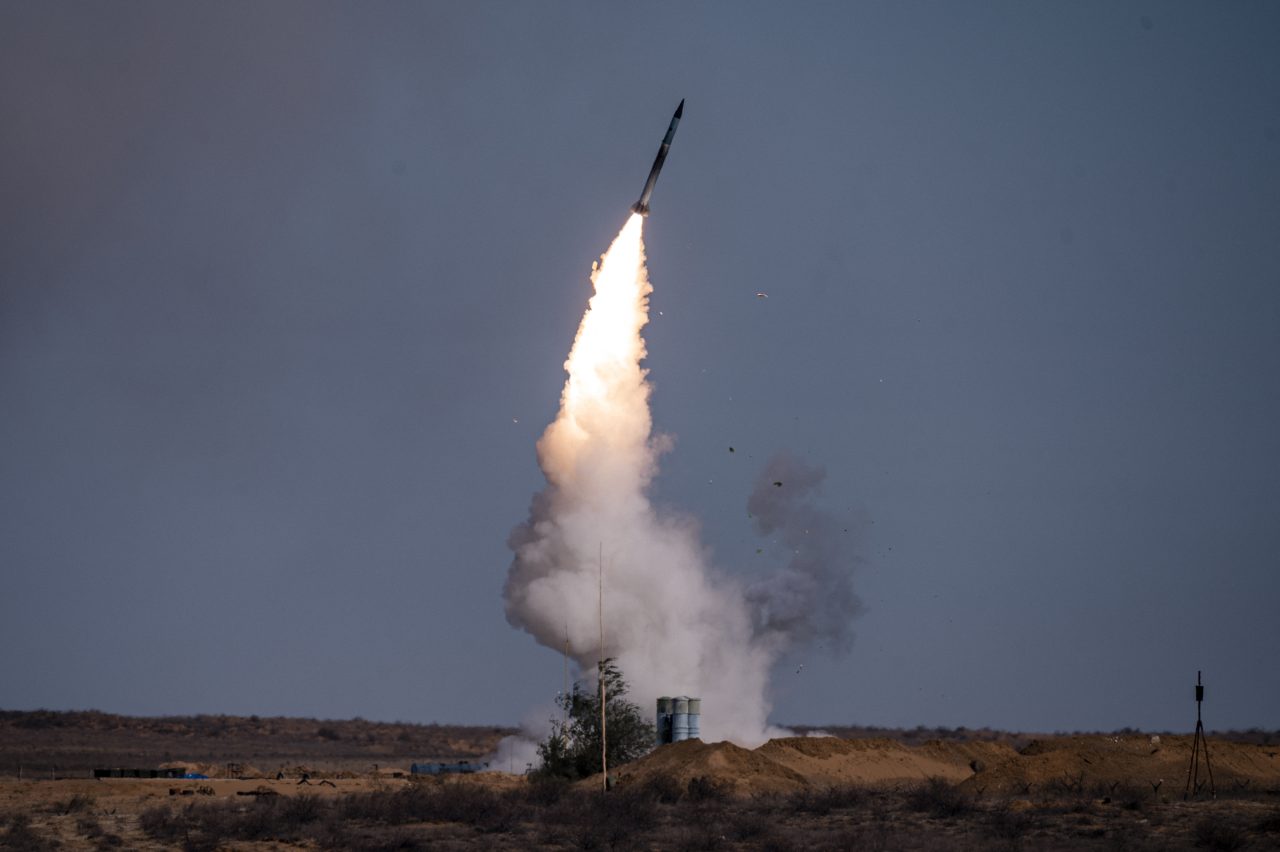On August 15, speaking from the Red Fort, India’s Prime Minister Narendera Modi announced an ambitious national security initiative titled ‘Mission Sudarshan Chakra,’ aimed at protecting India’s critical establishments and religious sites over the next decade.
India will develop an indigenous air defense system by 2035, not just to neutralise enemy attacks, but also to hit back strongly, he added.
“I am saying today from the ramparts of the Red Fort that in the coming 10 years, by 2035, all the important places of the nation, which include strategic as well as civilian areas, like hospitals, railways, any centre of faith, will be given complete security cover through new platforms of technology.”
“This security shield should keep expanding; every citizen of the country should feel safe,” Modi said.
Mission Sudarshan Chakra will entail building a multi-layered, integrated air and missile defense shield, featuring an overlapping network of early-warning and tracking sensors, robust command and control posts, reliable land- and sea-based batteries of advanced interceptor missiles, and other weapons.
The integrated defense shield will also include space-based sensors for early warning and tracking threats.
When the air defense shield was announced, many analysts dismissed it as unrealistic and the 2035 timeline as overtly ambitious.
However, given the steady progress India has made in the last 50 days since the announcement, it would not be surprising if India is able to operationalize the country-wide air defense network ahead of schedule.
Amid a series of tests of various long and short-range air defense systems, India is also doubling down on the S-400 Triumf, which impressed everyone during the four-day war with Pakistan in May this year.
India Doubles Down On S-400
According to media reports, India plans to order five additional S-400 batteries from Russia.
Top defense ministry officials will meet their Russian counterparts this week to consider either joint manufacture or outright purchase of five more S-400 air defense systems from Moscow to enhance India’s long-range defensive capabilities, the Hindustan Times reported.
The deal could be finalized ahead of Russian President Vladimir Putin’s visit to India in December.
According to reports, India could purchase three S-400 batteries directly from Russia, while the remaining two batteries could be manufactured in India under the Technology Transfer (ToT) model.

Notably, India signed an agreement for five S-400 Triumf batteries in 2018, under a US$5.43 billion deal. Three of these S-400 systems have already been delivered to India.
The S-400 Triumf saw action in May 2025, when India deployed them on the India-Pakistan border during Operation Sindoor.
According to the Indian Air Force (IAF), the S-400 system also scored the longest surface-to-air kill in history during the May conflict.
“We have at least five fighters confirmed kills and one large aircraft, which could be either an ELINT aircraft or an AEW&C aircraft, which was taken on at a distance of about 300 kilometres. This is actually the largest ever recorded surface-to-air kill that we can talk about,” Indian Air Force Chief Air Chief Marshal Amar Preet Singh said in August.
Calling the Russian-made S-400 a “game-changer,” he said: “Our air defense systems did a wonderful job. The S-400 system, which we recently bought, has been a game-changer. The range of that system has really kept their aircraft away from their weapons, like long-range glide bombs. They have not been able to use any of those because they have not been able to penetrate the system,” said the Air chief.
Besides, according to the IAF officials, the S-400 was also responsible for shooting down Pakistan’s F-16 and JF-17 Thunder fighter jets.
The S-400 not only proved an effective stand-off weapon but also has immense deterrence value, as its long range means Pakistani Air Force fighter jets did not come within 300 kilometers of the Indian border.
The remaining two batteries of the S-400 system are expected to be delivered to India by 2026.
With 10 batteries of the S-400 AD system, India can not only cover its northern border with Pakistan and China, but also cover a substantial part of its approximately 11,099 km of coastline.
Meanwhile, last week, the Indian Army also placed an order for procuring the AK-630 air defence guns, which will be deployed along the Pakistan border.
Indian Army Orders AK-630 Air Defense Guns
The Indian Army is undertaking an emergency acquisition of six mobile AK-630 multi-barrel air defense gun systems. These AK-630 multi-barrel guns will help protect population centres and religious sites near the Pakistan border.
These guns have an effective range of 4 to 6 kilometers.
The procurement tender for the guns has been issued to the defense PSU, Advanced Weapons and Equipment India Limited (AWEIL).
“The contract will be inked under the fast-track emergency procurement mechanism approved after Operation Sindoor. More such guns, which act as close-in weapon systems because of their high rate of fire, will be ordered at a later stage,” a defense official said.
The AK-630 multi-barrel gun systems are mounted on trailers and towed by high-mobility vehicles, which offer flexibility and rapid deployment. The gun system has a cyclic rate of fire of up to 3,000 rounds per minute, creating a wall of air defense shells to destroy approaching hostile aerial objects at close ranges.
“It has an all-weather fire control system for target detection and engagement during day and night, as well as adverse weather conditions. The AK-630 system will be integrated into the Army’s wider air defense command-and-control architecture Akashteer,” the officer said.
However, the system will form just one of the essential pillars of the Sudarshan Chakra shield.
India’s Steady Progress Towards Sudarshan Chakra
The DRDO is developing a host of weapons systems to be integrated into the Sudarshan Chakra.
On August 24, just days after PM Modi’s announcement, India’s Defence Research and Development Organisation (DRDO) successfully conducted the maiden flight-tests of the Integrated Air Defence Weapon System (IADWS) off the coast of Odisha.
IADWS is a multi-layered air defence system comprising all indigenous Quick Reaction Surface to Air Missiles (QRSAM), Advanced Very Short Range Air Defence System (VSHORADS) missiles, and a high-power laser-based Directed Energy Weapon (DEW).
The Integrated operation of all the weapon system components is controlled by a Centralised Command and Control Centre developed by the DRDO.
During the flight tests, three different targets, including two high-speed fixed-wing Unmanned Aerial Vehicle targets and a multi-copter drone, were simultaneously engaged and destroyed completely by the QRSAM, VSHORADS, and High-Energy Laser weapon system at different ranges and altitudes.
Then, in the last week of August, details emerged of India’s ambitious project Kusha timelines, under which India is aiming to develop an indigenous long-range air defense system, similar to Russia’s S-400, which can engage ballistic missiles at long ranges.
Under the project Kusha, India plans to test the M1 missile, with an interception range of 150 km, against incoming enemy aircraft, stealth fighters, cruise missiles, drones, and precision-guided munitions in 2026. It will be followed by M2 (250 km range) in 2027 and M3 (350 km range) in 2028 for the missile-based layered defense system.
In September, Defense Minister Rajnath Singh announced a high-level committee to draft a phased action plan (medium-term to 2030, long-term to 2035), prioritizing protection for nuclear reactors and ISRO facilities.

According to defense sources, India’s Mission Sudarshan Chakra will create a nationwide air defense shield by linking 6,000 to 7,000 radars, satellites (to keep constant watch from space), and DEWs or directed energy weapons.
These thousands of radars, hundreds of satellites, and other surveillance and defense platforms will be interconnected, forming a single integrated network that creates a comprehensive picture of the threat environment.
India is also working to deploy 52 new surveillance satellites by 2030 under Phase 3 of the Space-Based Surveillance (SBS) programme.
The steady pace at which India is progressing towards its goal of operationalizing the Sudarshan Chakra, the 2035 deadline does not appear too ambitious.
- This is an Opinion Article




